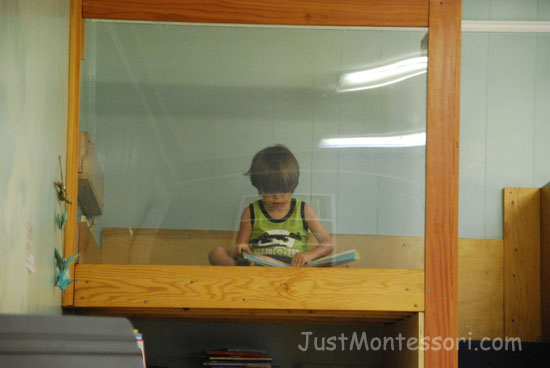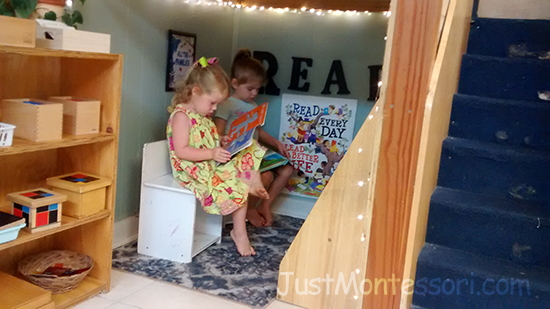

The library area of the classroom should be comfortable, inviting, and beautiful. We realize the importance of books being vital tools to use in a child’s development. Language, vocabulary, and comprehension skills
are just some of the benefits of providing children with a variety of books. In the Montessori environment books should be those that are realistic. Fantasy is avoided because young children live in the now, and the ability to distinguish reality from fantasy can be hard for the 0-6 year old child.
In today’s world children are exposed to so many things at a young age, I feel that helping them to identify fiction from non-fiction is important. We have to help to understand the difference. There are many good fiction books, if chosen wisely that can teach great lessons (not fantasy). That being the case, over the years I have worked at different schools and found differing thoughts on the subject of fiction and non-fiction books in the classroom.
I find that from the beginning of the school year it is important to present a lesson to the child on fiction and non-fiction books. Show them examples as you discuss with them the differences. Throughout the remainder of the year, I will remind them if a book is non-fiction that we will be reading. One of the schools I worked at had enough space to provide a fiction bookshelf and another one for non-fiction books. Do what works best for you and your school policy, by providing a nice library area where a child or children can go and enjoy books. I also like to include a ‘listening table’ with headphones to allow a child to listen to a story.








